GENOA
Port cities serve as gateways to another world. While in past centuries they were often the starting point of daring sea voyages to the so-called “New World” or towards colonies, today they still remain important hubs for maritime traffic. They are centers for the exchange of goods or – in the case of many road travelers – the place where the adventure begins.
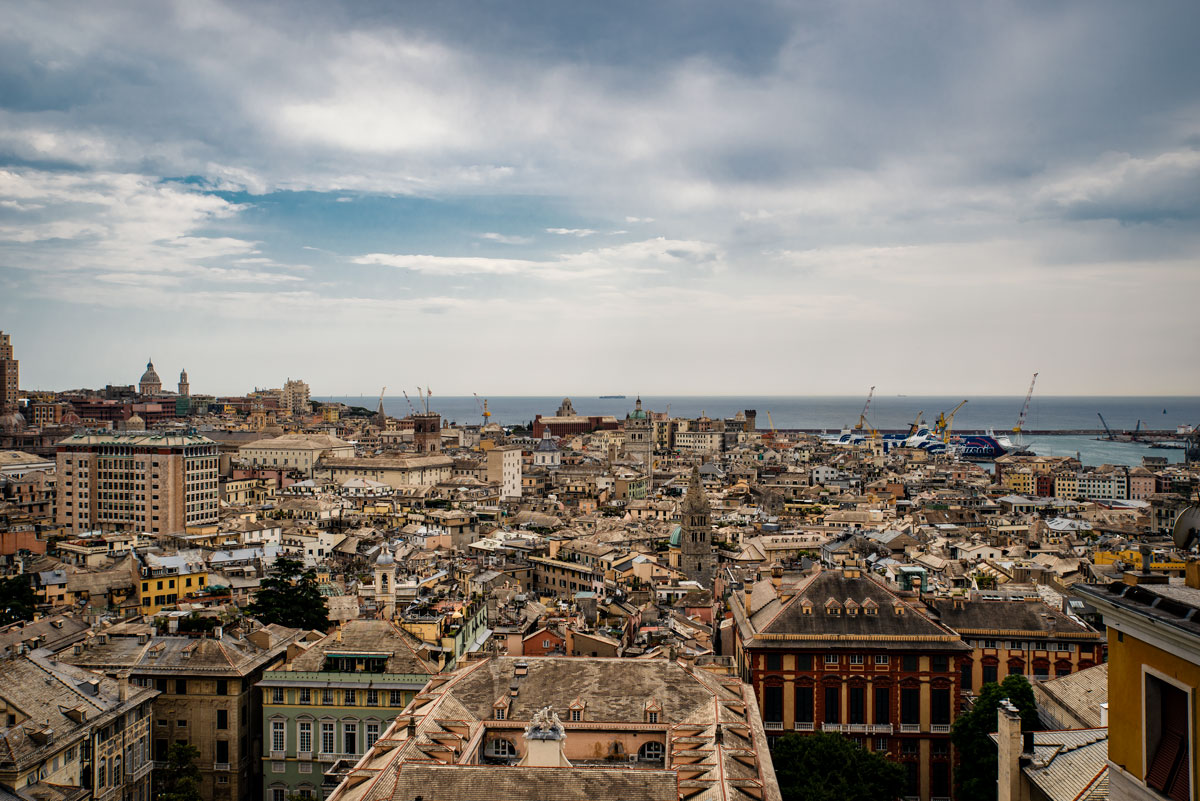
For us, Genoa is a stopover on the way from Germany to Sardinia: this is where our ferry to Olbia departs. As we set off in the morning from a small but crowded campsite west of the port city and maneuver through dense traffic on a highway into the city center, our anticipation grows. In the evening, we will board the ferry – our first ferry ride with Mr. Lux – but until then, we have the whole day to explore the city.
The heart of a city is its market. So first, we head to the Mercato Orientale, which is not far from the city center. We love the fresh and exotic offerings of such markets, showcasing the full range of culinary delights of the respective region. The colors and shapes of vegetables and fruit are particularly colorful motifs for the travel photo book.
Life unfolds between the medieval alleyways that nestle close together. Houses press up against houses, every now and then a piazza creates a little space and air. A labyrinth, the image of the world in miniature. We move from alleyways with trendy bars to alleyways with touristy craft stores. Behind them is the red light district: the houses here are so close together that hardly any light reaches the ground. It smells of faeces. Tired women stand bored in high heels in dark corners. Not far away: Genoa Cathedral, guarded by two lions at the bottom of the stone steps.
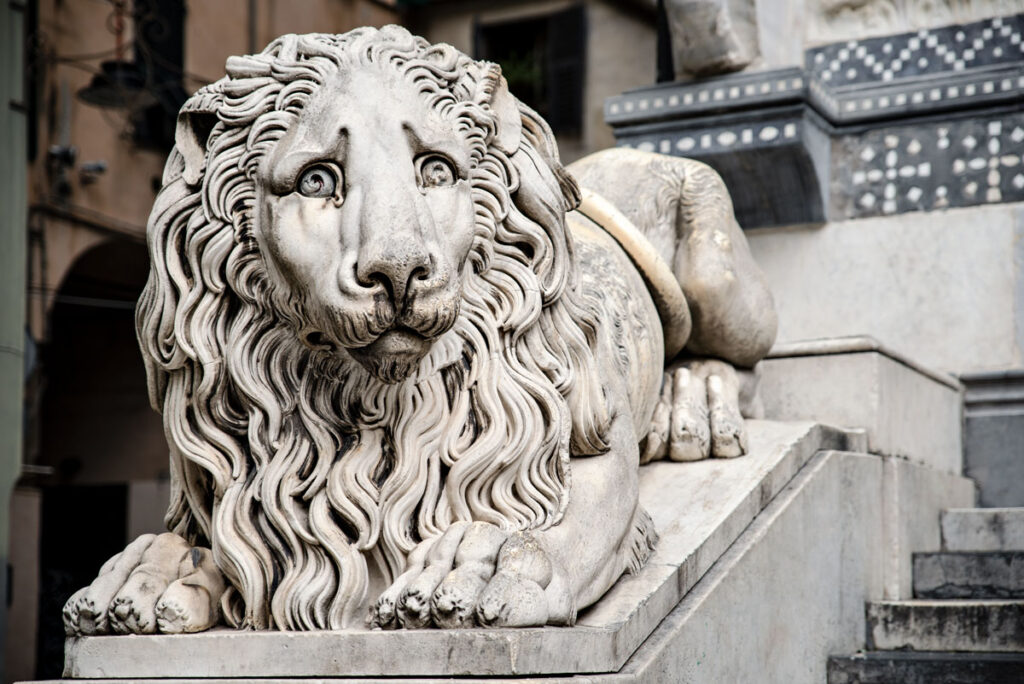
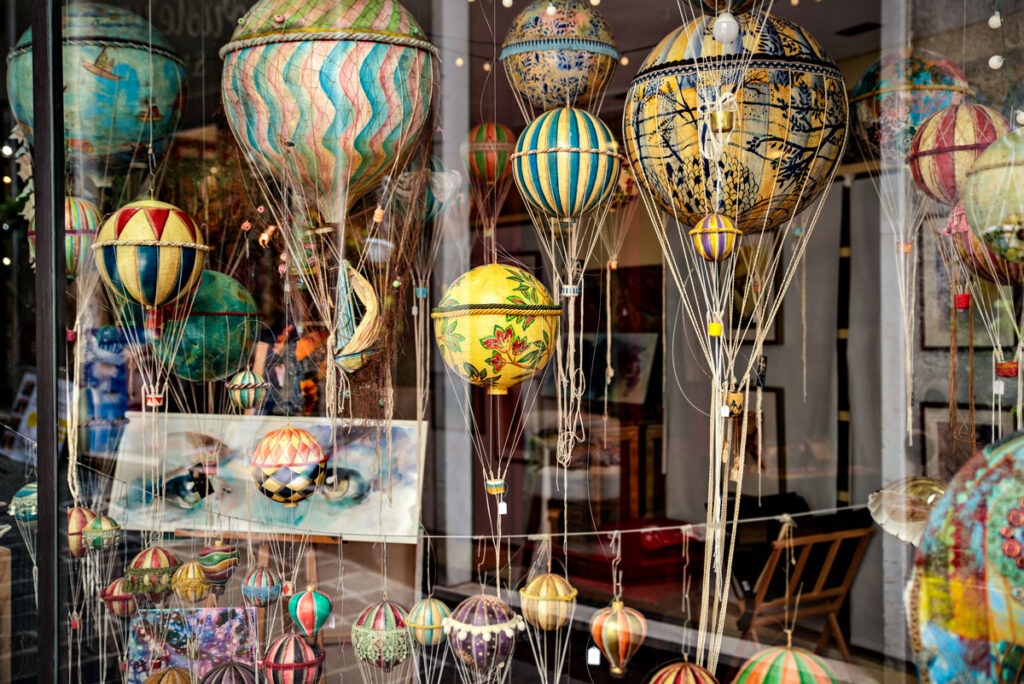
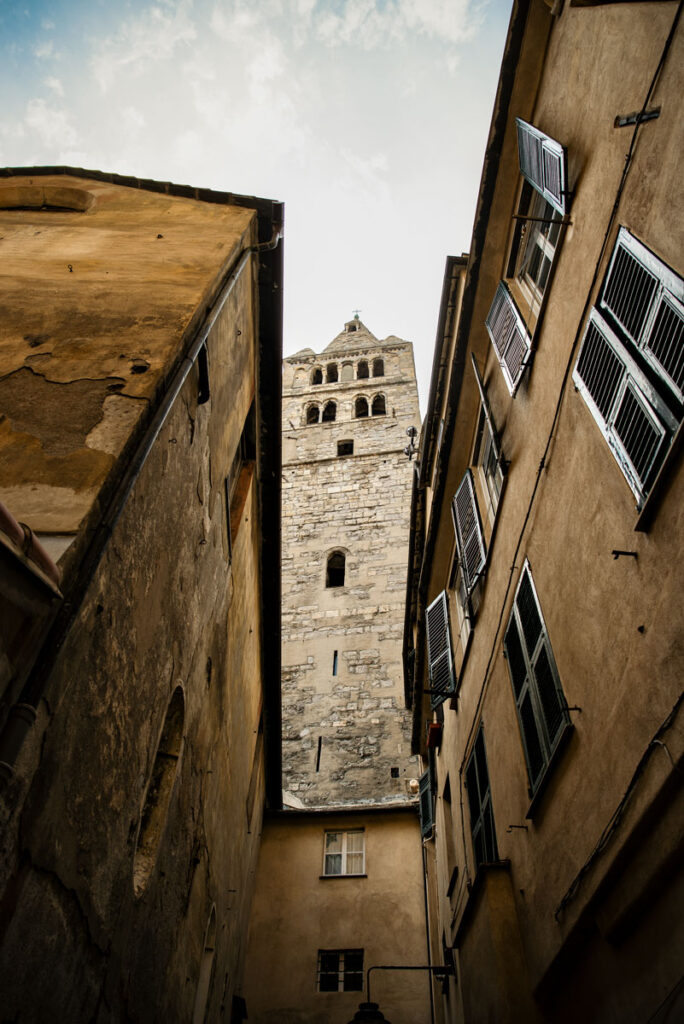
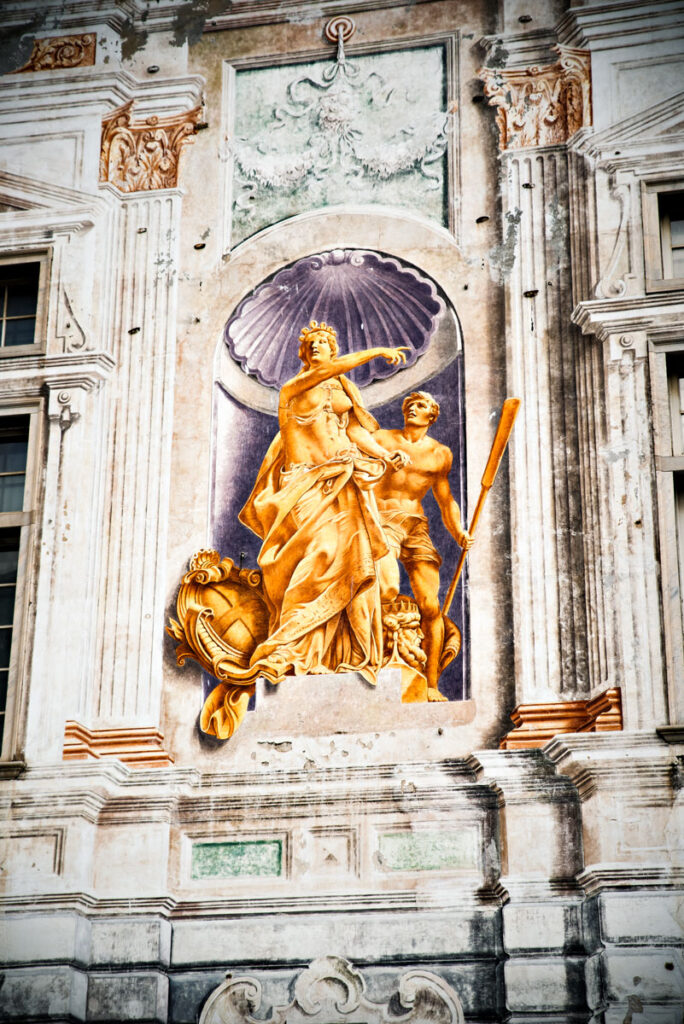
Genoa is not a green city. With the historic elevator, the Ascensore Castelletto Levante, we ascend to a viewpoint. From here, one could say: Genoa is not even a beautiful city. And yet, we like it. Perhaps precisely because of its grunginess, its chaos, and all the life in such a confined space. And certainly, because Genoa is the gateway to the world for us.
Refreshed with espresso and ice cream, we finally stroll down to the harbor. We see many cars, multi-lane roads, few locals, but many Africans who seem to have stranded here and are trying various tricks to earn some money. A light drizzle begins.
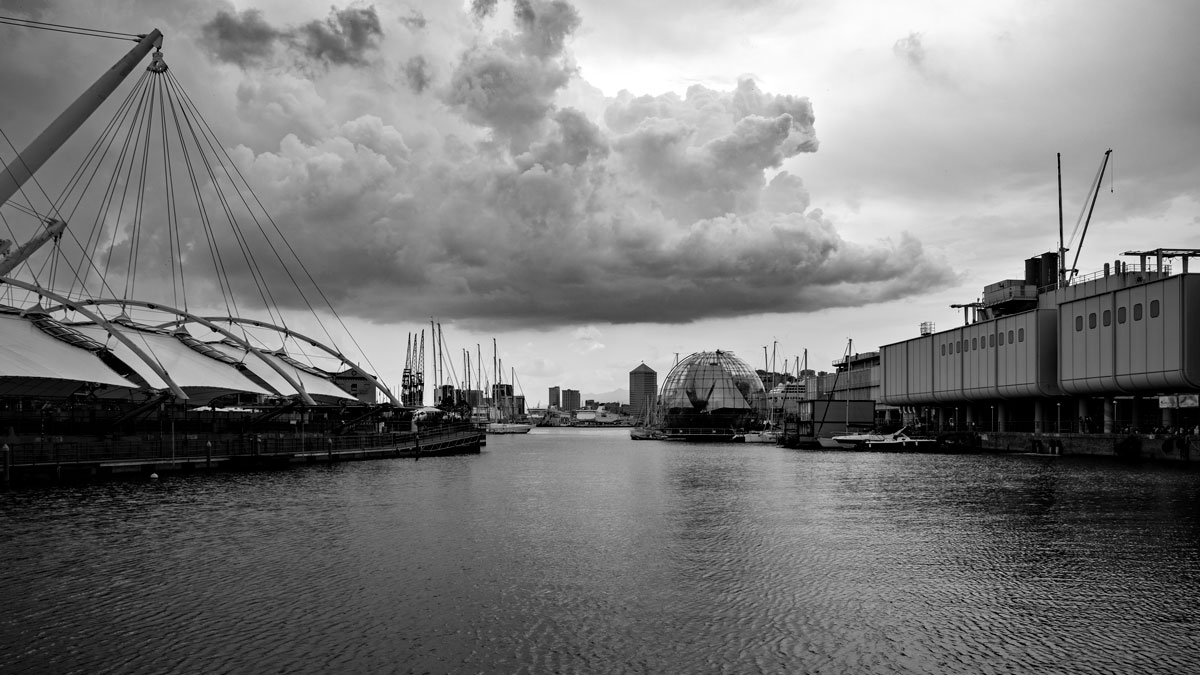
Late in the evening, the sun has fought its way back out. The road to the ferry port is closed, the detour is poorly signposted, so we have to make extra rounds until we finally find the entrance to the harbor. In the belly of the ship, Mr. Lux finds his place for the night, and we settle into our cabin. Just a year ago, we wouldn’t have indulged in this luxury and slept like some other passengers in a corner on the floor of the atrium. Not an option anymore with a baby.
As the blue hour sets in and we glide out of the harbor, we make our way to the highest deck of the ship. We wave to Genoa’s majestic lighthouse as we set course for Sardinia.
Info about our trip
If you want to ship your vehicle to Corsica, Sardinia, Sicily, or Tunisia, Genoa – coming from Germany – is the nearest ferry port. Although we enjoyed Genoa, half a day to a full day should suffice for a city tour. Simply let yourself wander through the narrow streets, get lost, and visit one of the small cafes in the old town. Enjoy your time on the mainland before continuing by ship (which depending on the length of the route and chosen sleeping arrangements can range from exhausting to comfortable).
If Genoa is not on your way, the detour there is probably not worth it. Traffic in Genoa is very slow-moving, the surrounding highways are congested, and there is often gridlock in the city during peak hours. A quick visit – in the morning into the city, out again in the afternoon – can thus end up being a nerve-wracking experience. There are nicer destinations to be found elsewhere.
Genoa is a big city. Here, suitable options should be available for every budget.
As already mentioned, you should definitely visit the Mercato Orientale. It is housed in an inconspicuous old building. You can explore the market stalls on a circuit and in the middle of the building there is a large food court with international and more modern finger food.
Tip: The toilets at the food court are clean and free of charge.
We didn’t spend the night in Genoa itself, but a little to the west at the Il Caravan Park La Vesima campsite. Unfortunately, you don’t have many more options if you want to spend the night in or close to your vehicle. The campsite is functional, but nothing more. The access to the stone beach is quite nice (don’t expect a fine sandy beach on the Ligurian coast).
Genoa is a lively city full of travelers from all over the world, a paradise for scammers and pickpockets. In the harbor area in particular, we were unpleasantly approached by homeless people and refugees and sometimes followed. Don’t flaunt your valuables and don’t be too naive when you’re out and about, then you shouldn’t have any problems.
We found Italians to be very child-friendly people. Whether we were in a restaurant or standing in line at the supermarket checkout, our then 8-month-old son was always greeted with a smile, and his occasional fussiness was always met with humor.
Regarding the child-friendliness of the facilities in restaurants and other stores, we had very different experiences. From fancy restaurants with no changing facilities to fully equipped changing rooms in the hinterland of Sardinia. Be prepared for anything.
Genoa is best explored on foot. You can park relatively cheaply outdoors around Piazza della Vittoria.
When planning your time, always consider the heavy traffic in Genoa. It takes a long time to drive into the city and just as long to navigate your way out. So if you are planning to drive to the port in the afternoon or evening, expect rush hour and plan enough time to get there.
